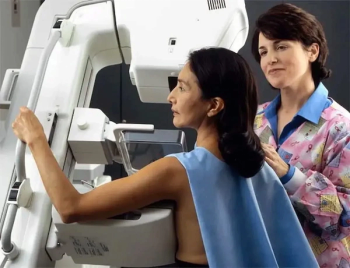
Is elastography the next color Doppler?
New ideas take time to catch on in medical imaging, whether they are brand new modalities, such as MR, or new techniques within an established modality, such as color Doppler ultrasound. It’s as though there are dues to be paid. Elastography appears to have paid its dues.
New ideas take time to catch on in medical imaging, whether they are brand new modalities, such as MR, or new techniques within an established modality, such as color Doppler ultrasound. It’s as though there are dues to be paid. Elastography appears to have paid its dues.
This technology appeared in vendors’ booths at the RSNA meeting years ago. I remember seeing it first under the Hitachi banner and, more recently, in the RSNA booths of Siemens and ultrasound startup SuperSonic Imagine. It is based on a relatively simple principle, one practiced every time a physician does a palpation. Diseased or injured tissues compress differently than healthy tissue. Elastography measures the degree to which a lesion can be compressed, as seen in color-coded graphics on ultrasound elastography. Cancerous tumors tend to be stiffer than healthy or even benign lesions. A compressible lesion, therefore, is less likely to be malignant.
This year advocates of the technique will splash ring-like color graphics in meeting rooms and on the exhibit floor. Those presentations will have added credibility thanks to a Nov. 30 release by the RSNA that highlights research indicating the potential of elastography to reduce the number of breast biopsies.
Dr. Stamatia V. Destounis, a diagnostic radiologist at Elizabeth Wende Breast Care, a large, community-based breast imaging center in Rochester, NY, was quoted in the Monday press release from the society as saying the technique is “an easy way to eliminate needle biopsy for something that’s probably benign.”
For the RSNA to serve as the megaphone for such a statement is reason enough to believe that elastography’s time has come, a fact sure to be driven home by vendors’ efforts to jump onboard the bandwagon as never before.
Going into the show, word began to circulate that major developers of ultrasound were planning to highlight their own versions of elastography, either as works-in-progress or full-blown commercial products. Their push could turn into a headlong surge if they try to keep up with the likes of SuperSonic, a small company in France that unveiled its elastography ultrasound system, called Aixplorer, at last year’s RSNA meeting.
SuperSonic is back this year, evangelizing its proprietary form of ShearWave Elastography, which differs from other approaches. Unlike conventional approaches, which rely on manual compression of the breast, SuperSonic’s version is operator-independent, using ultrasound “shear waves” to compress tissue and ultrasound echoes to assess tissue stiffness.
SuperSonic and other vendors of this technology can count on the buzz about elastography to drive interest in their technologies. If they live up to their potential, elastography could become the biggest advance in ultrasound since Doppler.
Newsletter
Stay at the forefront of radiology with the Diagnostic Imaging newsletter, delivering the latest news, clinical insights, and imaging advancements for today’s radiologists.

































